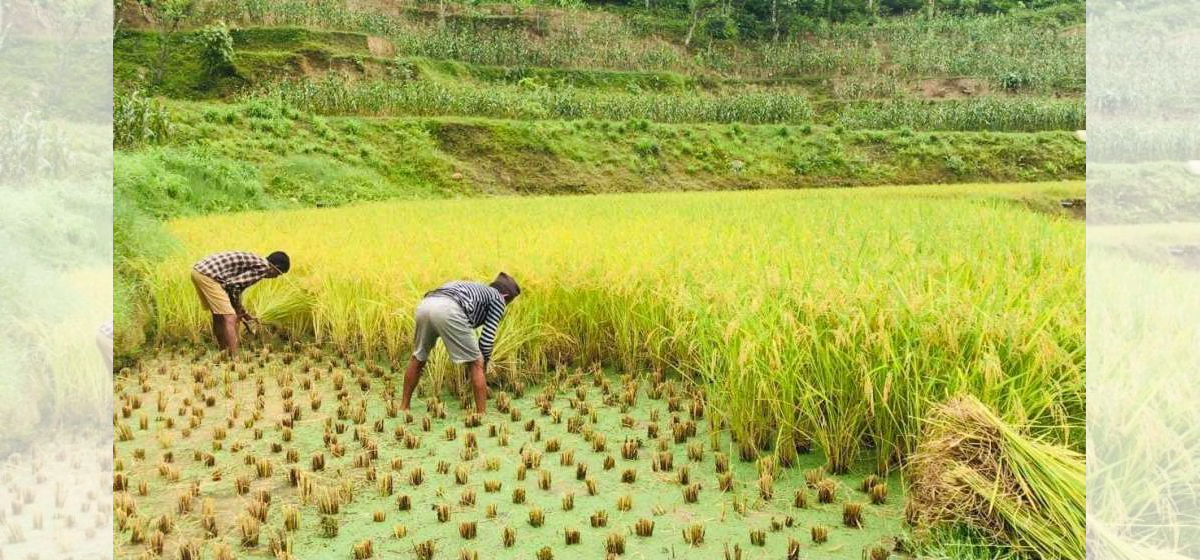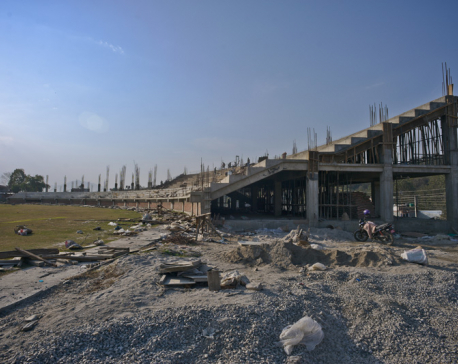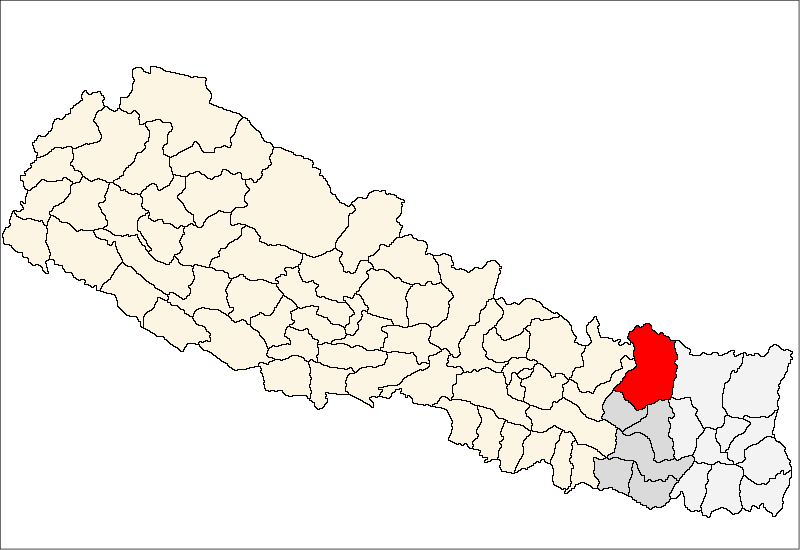
OR
Paddy plantation completed only on 26.71 percent of the total cultivable area
Published On: July 9, 2023 09:10 PM NPT By: Republica | @RepublicaNepal

KATHMANDU, July 9: Even after the third week of Asar (June/July) has passed, only one-fourth of the paddy planting has been completed.
According to the data released by the Ministry of Agriculture and Livestock Development (MoALD) on Friday, only 26.71 percent of the total cultivable area for paddy planting in the country has been completed as of July 6. This is comparatively less than last year when 40 percent of planting was completed by this time.
According to the ministry, due to the late onset of monsoon in Madhesh, Gandaki and Lumbini provinces, paddy planting has been delayed. This year, monsoon entered through the eastern region of Nepal on June 14. Last year, due to the early onset of monsoon on June 5, paddy planting was early.
The Ministry of Agriculture has made a preliminary estimate that 100 percent planting will be done in various areas of the country by July 31. In Nepal, paddy cultivation is done on 13,57,816 hectares of land. Of this, paddy planting has been completed in 362,625 hectares.
Plantation in a total of 48.9 percent of paddy fields in Sudurpaschim and 45 percent of fields in Karnali have been completed. In Madhesh, which is known as the country's food bank, only 9.5 percent of the fields have been planted with paddy.
There is a risk of reduced rice yielding when the planting is delayed. Insufficient water for rice due to delayed monsoon impacts the growth, but if the monsoon arrives timely and favors proper irrigation, there is a possibility of increased rice yield. However, factors such as seed quality, fertilizer, and pest infestation also affect rice production.
Rice is the main agricultural crop in Nepal. According to the statistics of MoALD, 54,86,000 tons of rice was produced in Nepal in the fiscal year 2022/23. The contribution of rice to the total agricultural production of Nepal is about 21 percent.
Agriculture accounts for nearly one-fourth of Nepal's economy. Therefore, rice crop is considered important for Nepal’s economy and livelihood.
You May Like This

Only five percent of paddy transplanted in Banke till June end
BANKE, July 6: This year, paddy plantation has been delayed in Banke district. The plantation was delayed due to the... Read More...

92 percent paddy plantation completed
KATHMANDU, Aug 22: The country has recorded 92 percent paddy plantation till August 18. ... Read More...

Delay in land acquisition hits Mulpani ground construction works
KATHMANDU, March 2: The construction of Mulpani International Cricket Stadium which started a decade ago will take at least three more... Read More...




Just In
- NEA Provincial Office initiates contract termination process with six companies
- Nepal's ready-made garment exports soar to over 9 billion rupees
- Vote count update: UML candidate continues to maintain lead in Bajhang
- Govt to provide up to Rs 500,000 for building houses affected by natural calamities
- China announces implementation of free visa for Nepali citizens
- NEPSE gains 14.33 points, while daily turnover inclines to Rs 2.68 billion
- Tourists suffer after flight disruption due to adverse weather in Solukhumbu district
- Vote count update: NC maintains lead in Ilam-2













Leave A Comment